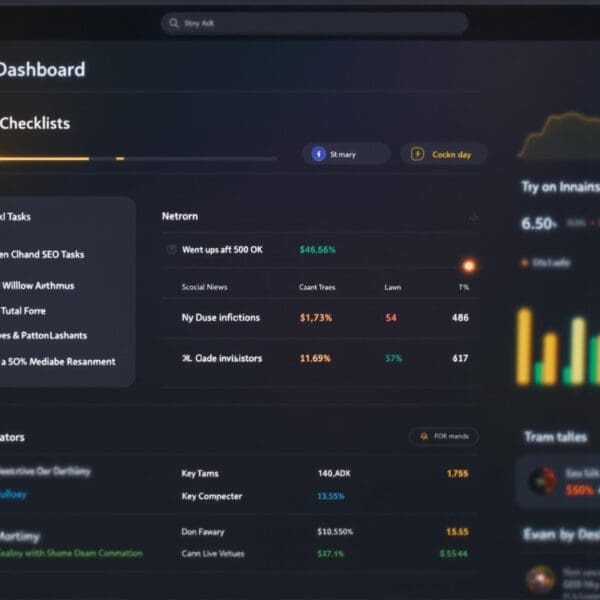There are two approaches to SEO: White Hat SEO and Black Hat SEO. Discover their impact:
- White Hat SEO uses ethical methods for sustainable positioning
- Black Hat SEO exploits algorithmic loopholes for fast but risky results
- Grey Hat SEO combines both approaches within a zone tolerated by Google
- Algorithm evolution makes Black Hat techniques increasingly ineffective
- A White Hat approach is still the best long-term strategy
Table of contents
In the world of SEO, there are two opposing approaches: White Hat SEO and Black Hat SEO. As a specialist in the field for almost a decade, I’ve been able to observe the evolution of these practices and their impact on companies’ online visibility. Let’s dive into this interesting universe together to understand the issues and risks associated with each of these strategies.
Table of contents
ToggleWhite Hat SEO vs Black Hat SEO: definitions and main differences
White Hat SEO refers to all SEO practices that are ethical and in line with Google’s recommendations. This approach aims to improve a website’s ranking in a sustainable way by focusing on content quality, user experience and technical optimizations.
At the other end of the spectrum, Black Hat SEO refers to manipulative techniques prohibited by Google. These methods seek to exploit algorithmic loopholes to quickly achieve high rankings, often to the detriment of quality and user experience.
The main differences between these two approaches are :
- Sustainability of results
- Ethical practices
- The risks involved
- The time it takes to achieve results
Over the course of my career, I’ve seen that sites opting for a White Hat strategy achieve more stable and lasting results, albeit slower to manifest themselves. Black Hat techniques, on the other hand, can deliver quick results, but they are short-lived and risky.
Having also tested Black Hat SEO methods, the volumes of traffic generated by these methods can be very high. By using cloaking methods, content spinning (taking content in a foreign language and translating it into the local language targeted by the website) and combining it with keyword stuffing and multiple-tree link farming, within 2-3 months you can find yourself with traffic volumes in the 5-6 figure range, depending on your niche.
If you’re a B2B or B2C company, Black Hat SEO isn’t really recommended to be implemented directly on your main website. Methods can be implemented on website networks (PBNs), which need to be fine-tuned along the tree structure to minimize the level of spam from websites that will have direct (DoFollow) links to your website’s internal pages or home page.
To achieve high Google rankings over the long term, it’s crucial to focus on White Hat methods. These are part of a long-term strategy aimed at creating quality content and improving the user experience.
Black Hat SEO techniques: risks and consequences for your ranking
Black Hat SEO techniques are many and varied. Among the most common are :
- Keyword stuffing
- Cloaking (content concealment)
- Artificial links
- Duplicate content
- Satellite pages
- The hidden text
- Spamdexing
- Negative SEO
The risks involved in using these techniques are considerable. Google is constantly improving its algorithms to detect and penalize Black Hat practices. Penalties can range from a simple drop in ranking to total delisting of the site, with potentially disastrous economic consequences.
I’ve witnessed many cases where companies have seen their traffic plummet overnight as a result of using Black Hat techniques. Recovery can take months, even years, and often requires a complete overhaul of the SEO strategy.
It’s vital to note that Google offers the possibility of reporting sites using Black Hat techniques via a spam form. This is part of the search engine’s commitment to maintaining the quality and relevance of the results it delivers to users.
| Black Hat technique | Risk | Potential impact |
|---|---|---|
| Cloaking | High | Dereferencing |
| Keyword stuffing | Medium | Ranking penalty |
| Artificial links | High | Loss of domain trust |
To avoid SEO mistakes and boost your online visibility, it’s vital to remain vigilant and favor White Hat techniques.

Grey Hat SEO: a grey area between ethics and efficiency
Between White Hat and Black Hat SEO lies a gray area known as Grey Hat SEO. This approach attempts to combine certain techniques from both methods while remaining within a zone relatively tolerated by Google.
Grey Hat practices are often the result of a flexible interpretation of Google’s guidelines. For example, link obfuscation, although not recommended, is not explicitly forbidden and can be considered a Grey Hat technique. As an example, here’s a short, exhaustive list of Grey Hat SEO techniques:
1. PBN (Private Blog Networks)
- Private blog networks involve creating or acquiring several websites and linking them to generate backlinks to a main site. Although some operators do this naturally by managing several sites, setting up a PBN purely to manipulate SEO remains risky if the networks are discovered by Google.
2. Guest Blogging on a Large Scale
- Guest articles are still an excellent way of obtaining backlinks, but too much frequency or the use of low-quality or irrelevant blogs can attract Google’s attention. In 2024, SEOs are opting for a more selective approach, choosing high-quality sites in large numbers, sometimes verging on Grey Hat practices.
3. Partial cloaking
- Cloaking involves showing one content to search engines and another to users. Light forms of cloaking, such as adjusting text elements to include more keywords while maintaining a visually pleasing interface for visitors, are used. Although this practice is not permitted by Google, some SEOs subtly adjust content to include keywords without it being noticeable to the average user.
4. Advanced use of structured data
- Adding structured data is a White Hat technique, but some uses of rich snippets to achieve better positioning in the SERPs without the content actually being present (for example, adding product data to pages that have no products) becomes risky. This approach slightly deceives Google without going as far as Black Hat SEO.
5. Purchased and Undeclared Sponsored Backlinks
- Buying backlinks is clearly a Black Hat practice, but some SEOs buy sponsored articles by deliberately omitting the “sponsored” mention or not setting the
nofollowattribute. In 2024, Google’s algorithms are getting better at detecting these manipulations, but it’s still a common practice in Grey Hat SEO.
6. Subtle Content Spinning
- Content spinning is the automatic rewriting of content to avoid duplicate content. In Grey Hat SEO, practitioners use subtle rephrasing techniques, aided by artificial intelligence, to produce articles that are unique but very close to the original content. This allows content to be generated at low cost, but there is a risk of detection if changes are too limited.
7. Excessive Anchor Text optimization
- Using exact keywords in anchor text is common, but over-optimization quickly attracts Google’s attention. In 2024, Grey Hat SEOs are adjusting their anchors to include both keywords and more natural variants, in finer proportion.
8. Creating Doorway Pages
- Satellite pages aim to attract users to a specific entry page and then redirect them to the main page. This method is used in Grey Hat SEO with a more subtle design to make satellite pages appear relevant and useful to users while directing them to key pages for conversion.
9. Link obfuscation
- Link obfuscation consists in masking or hiding links on a web page so that they are invisible to Google’s robots, but still visible to users who visit your website. The aim is to benefit from the link juice generated by users, without the robots being able to index them. This method allows you to direct PageRank towards specific pages you wish to promote.
Over the course of my career, I’ve observed that many SEO professionals adopt a Grey Hat approach, seeking to maximize results while minimizing risk. However, this strategy is not without danger, and requires constant monitoring of Google’s algorithmic evolutions.
It’s vital to note that what is considered Grey Hat today may fall into the Black Hat category tomorrow. That’s why it’s vital to keep abreast of the latest SEO trends and constantly adapt your strategy.
The evolution of seo and future prospects
The history of SEO is marked by a constant evolution of Google’s algorithms to counter Black Hat techniques. In particular, the Panda and Penguin filters, introduced in 2011-2012, revolutionized the SEO landscape by severely penalizing manipulative practices.
Today, artificial intelligence plays a growing role in assessing content quality and detecting fraudulent practices. This trend will only intensify in the years to come, making Black Hat techniques increasingly risky and ineffective.
As a professional in the field, I can only advise adopting a White Hat approach to optimizing your SEO in 2024 and beyond. Although this strategy requires more work and patience, it offers more stable and long-lasting results.
To stay competitive, it’s essential to focus on creating quality content, improving the user experience and technically optimizing your site. These essential SEO tips will enable you to boost your traffic in a sustainable and ethical way.
Ultimately, the choice between White Hat, Grey Hat and Black Hat SEO depends on your long-term vision and risk tolerance. On the other hand, in an ever-changing environment, prudence and ethics remain your best allies in building a solid and lasting online presence.















